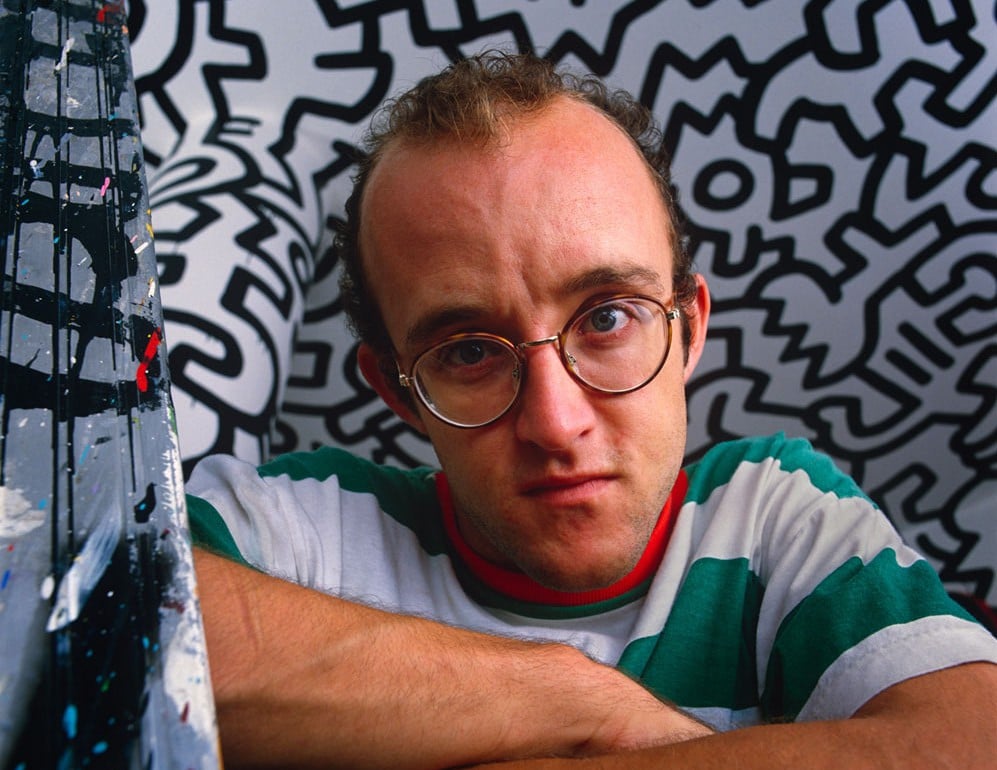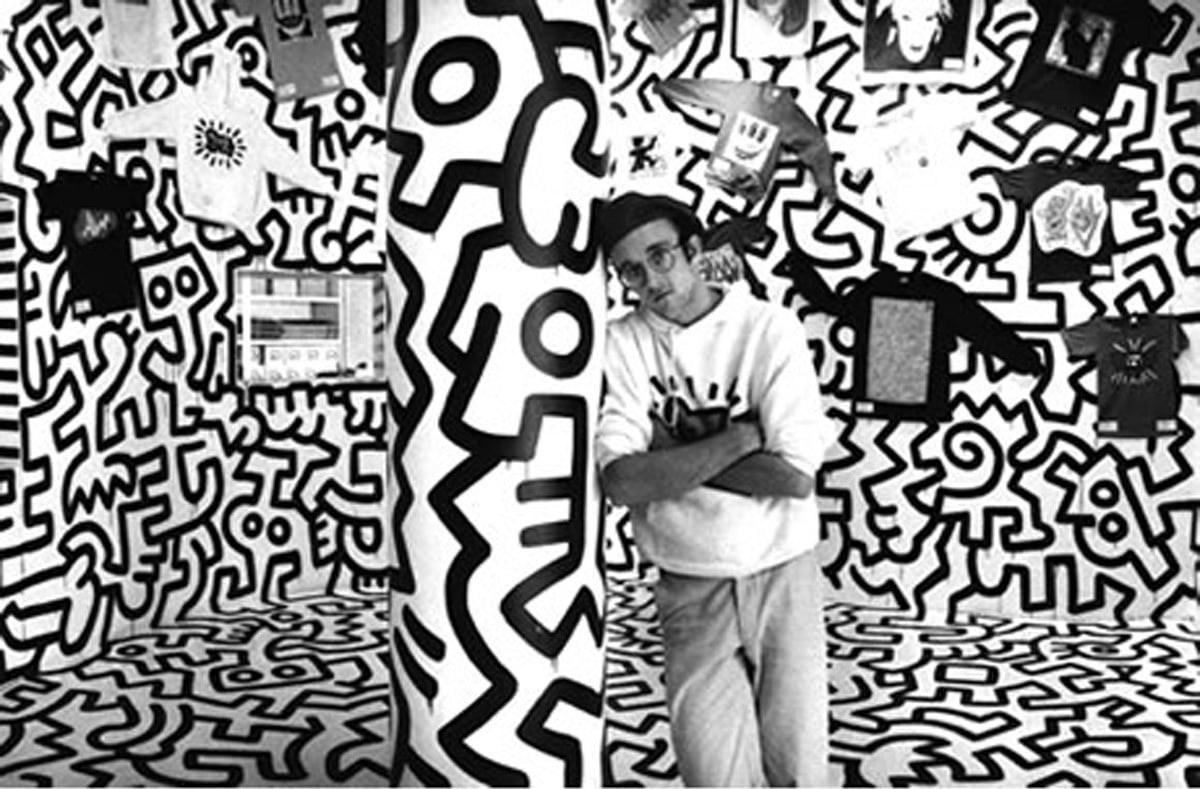People
Keith Haring Would Be 58 Today
"How do you participate in the world but not loose your integrity?" he said.

"How do you participate in the world but not loose your integrity?" he said.

Amanda Thomas

Renowned street artist Keith Haring would have turned 58 today. The artist was born on May 4, 1958, in Pennsylvania, and died in New York in 1990. His eponymous foundation was established a year before his death, and provides grants to those affected by AIDS.
At a glance, the pulsating, dancing figures seen in his works seem like images out of a children’s picture book: barking dogs, crawling babies, abstracted figures that make up playful scenes. But a closer look at where he created these images of simplistic lines and shapes might betray Haring’s political activism.
In a 1989 Rolling Stone interview, Haring asked: “How do you participate in the world but not loose your integrity?” Haring’s solution was to work in underground subway stations in a constant desire to democratize his work. He made murals, and he even opened up the Pop Shop, a store that made his work more accessible. But he also understood the value of his work in the art market, so he sold to the art world’s elite.
Haring’s inspiration came from Walt Disney, Charles Schultz, and his father’s doodles. After moving to New York, Haring organized shows at alternative places such as a basement on St. Mark’s Place, Club 57, and a Polish church which he renamed the Mudd Club. He also hosted parties with soon-to-be famous friends like Basquiat and Warhol, both of whom heavily influenced his practice.
During Haring’s short career, he completed over 50 murals (including his famous anti-drug mural in Harlem, Crack is Wack, and his animated billboard of the iconic “radiant baby” in Times Square). After being diagnosed with AIDS in 1989, he created the Keith Haring Foundation, which continues to provide grants to children in need and affected by HIV/AIDS. Needless to say, Haring worked hard until his death, and he’s left a lasting legacy in street art to show for it.
In celebration of Haring’s birthday, we rounded up five quotes by the artist about life and art below.

Keith Haring at the Pop Shop.
Photo: Charles Dolfi-Michels.
On fate:
“From the time I was little, things would happen that seemed like chance, but they always meant more, so I came to believe there was no such thing as chance. If you accept that there are no coincidences, you use whatever comes along.”
On the Pop Shop:
“Here’s the philosophy behind the Pop Shop: I wanted to continue this same sort of communication as with the subway drawings. I wanted to attract the same wide range of people, and I wanted it to be a place where, yes, not only collectors could come, but also kids from the Bronx. The main point was that we didn’t want to produce things that would cheapen the art. In other words, this was still an art statement.”
On using the subway as a canvas:
“I kept seeing more and more of these black spaces, and I drew on them whenever I saw one. Because they were so fragile, people left them alone and respected them; they didn’t rub them out or try to mess them up. It gave them this other power. It was this chalk-white fragile thing in the middle of all this power and tension and violence that the subway was. People were completely enthralled.”

Keith Haring, Growing 4 (1988).
Photo: Courtesy of private collector.
Image: artnet Auctions.
On being an artist:
“My father made cartoons. Since I was little, I had been doing cartoons, creating characters and stories. In my mind, though, there was a separation between cartooning and being a quote-unquote artist. When I made the decision to be an artist, I began doing these completely abstract things that were as far away from cartooning as you could go. It was around the time that I was taking hallucinogens – when I was sixteen or so. Psychedelic shapes would come like automatic writing, come out of my unconscious. The drawings were abstract, but you’d see things in them.”
On moving forward:
“The first thing I sold I got $135. That was when I was 17. It was a little ink drawing of a map of Berks County. When I was 17 I hitchhiked to New Jersey to go to this art exhibition on the Wildwood boardwalk…I got a prize and was real proud and sold a few little pen-and-ink drawings. I was hitchhiking to Beach Heaven in a car with this guy who said he was going almost all the way, and the portfolio was in the back seat. All of a sudden he changed his mind and was going a different way, so I had to get out really quick, and there was a line of traffic. I got out and left the whole portfolio of my work in the back seat. I never saw it again, and it was everything I had done up to that time. I just started all over and everything got better. Things like that happen to me a lot. I just want to go forward, forget about it and do something different. I just seemed like it kept getting better.”